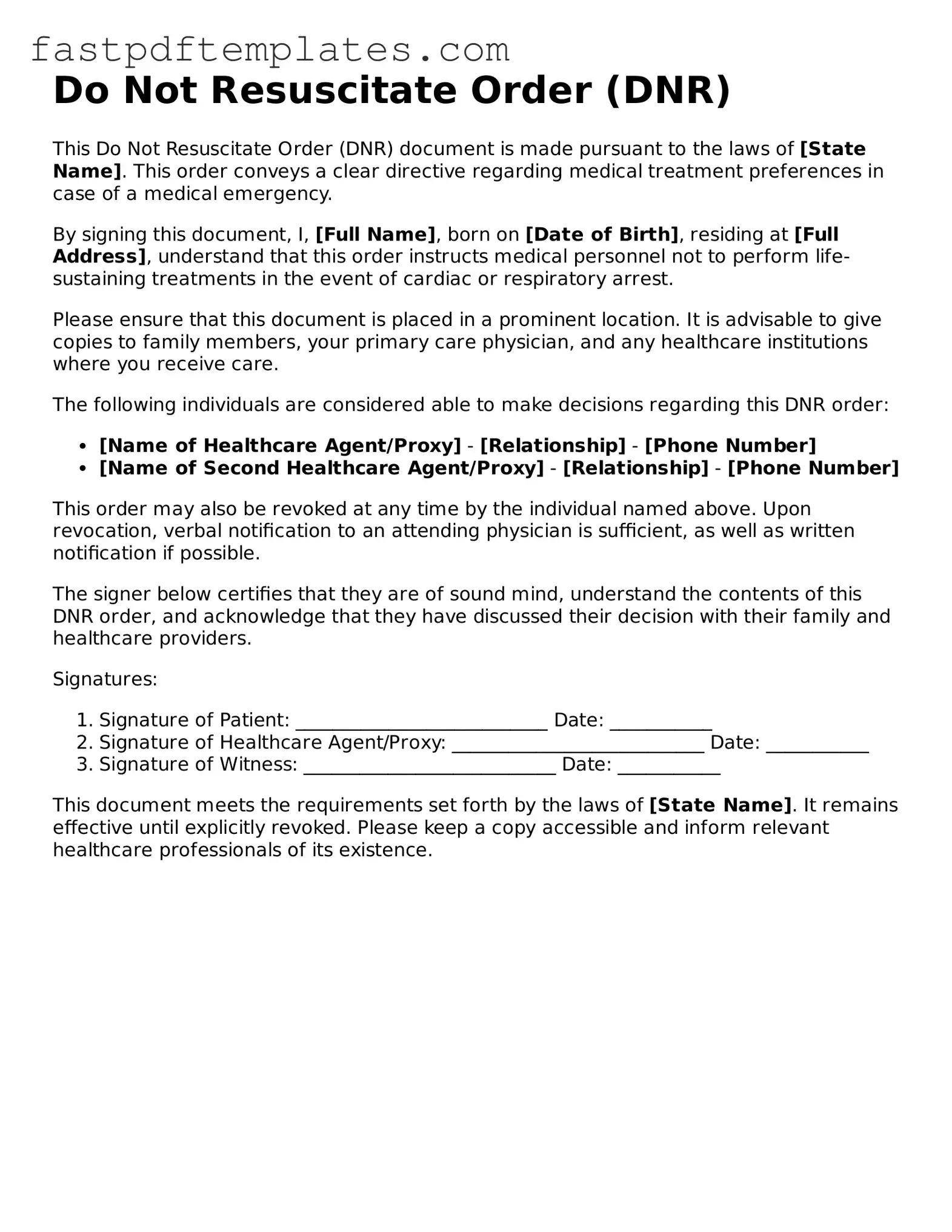Do Not Resuscitate Order (DNR)
This Do Not Resuscitate Order (DNR) document is made pursuant to the laws of [State Name]. This order conveys a clear directive regarding medical treatment preferences in case of a medical emergency.
By signing this document, I, [Full Name], born on [Date of Birth], residing at [Full Address], understand that this order instructs medical personnel not to perform life-sustaining treatments in the event of cardiac or respiratory arrest.
Please ensure that this document is placed in a prominent location. It is advisable to give copies to family members, your primary care physician, and any healthcare institutions where you receive care.
The following individuals are considered able to make decisions regarding this DNR order:
- [Name of Healthcare Agent/Proxy] - [Relationship] - [Phone Number]
- [Name of Second Healthcare Agent/Proxy] - [Relationship] - [Phone Number]
This order may also be revoked at any time by the individual named above. Upon revocation, verbal notification to an attending physician is sufficient, as well as written notification if possible.
The signer below certifies that they are of sound mind, understand the contents of this DNR order, and acknowledge that they have discussed their decision with their family and healthcare providers.
Signatures:
- Signature of Patient: ___________________________ Date: ___________
- Signature of Healthcare Agent/Proxy: ___________________________ Date: ___________
- Signature of Witness: ___________________________ Date: ___________
This document meets the requirements set forth by the laws of [State Name]. It remains effective until explicitly revoked. Please keep a copy accessible and inform relevant healthcare professionals of its existence.
